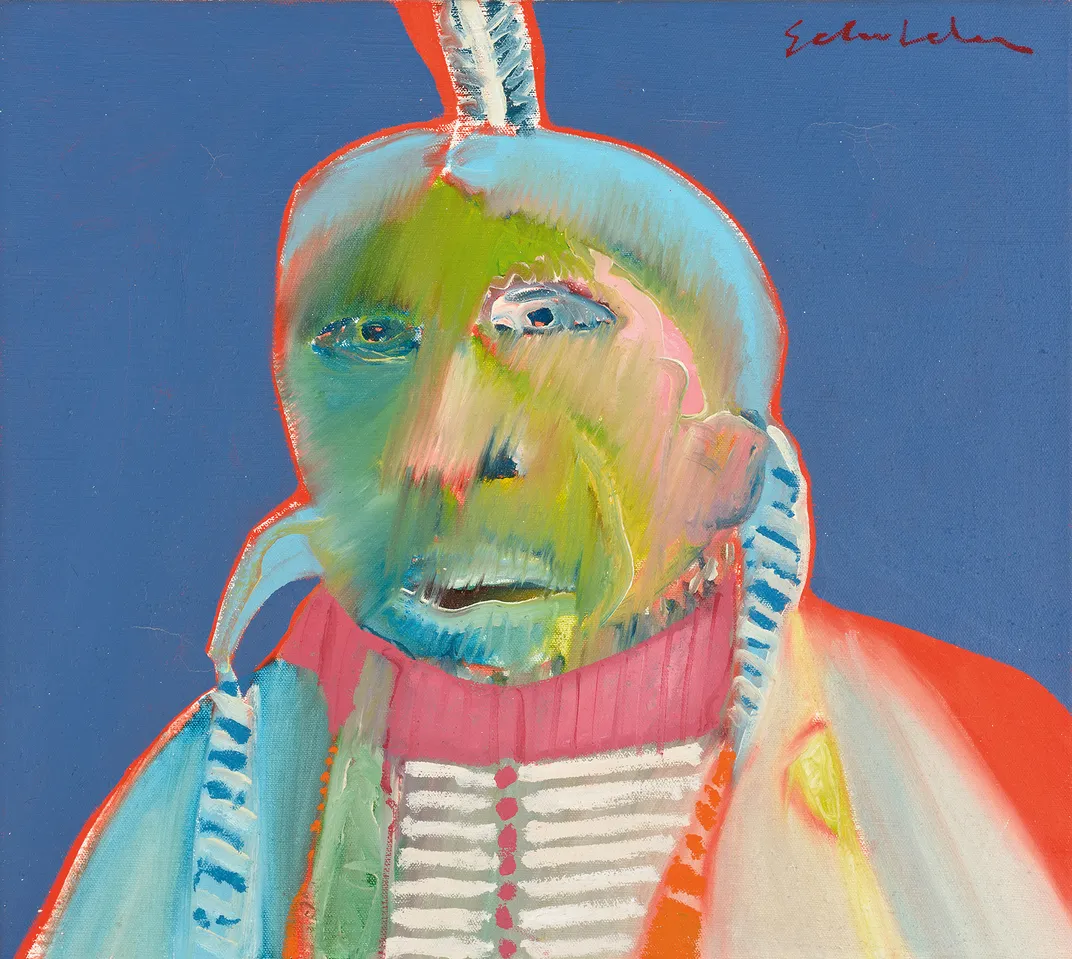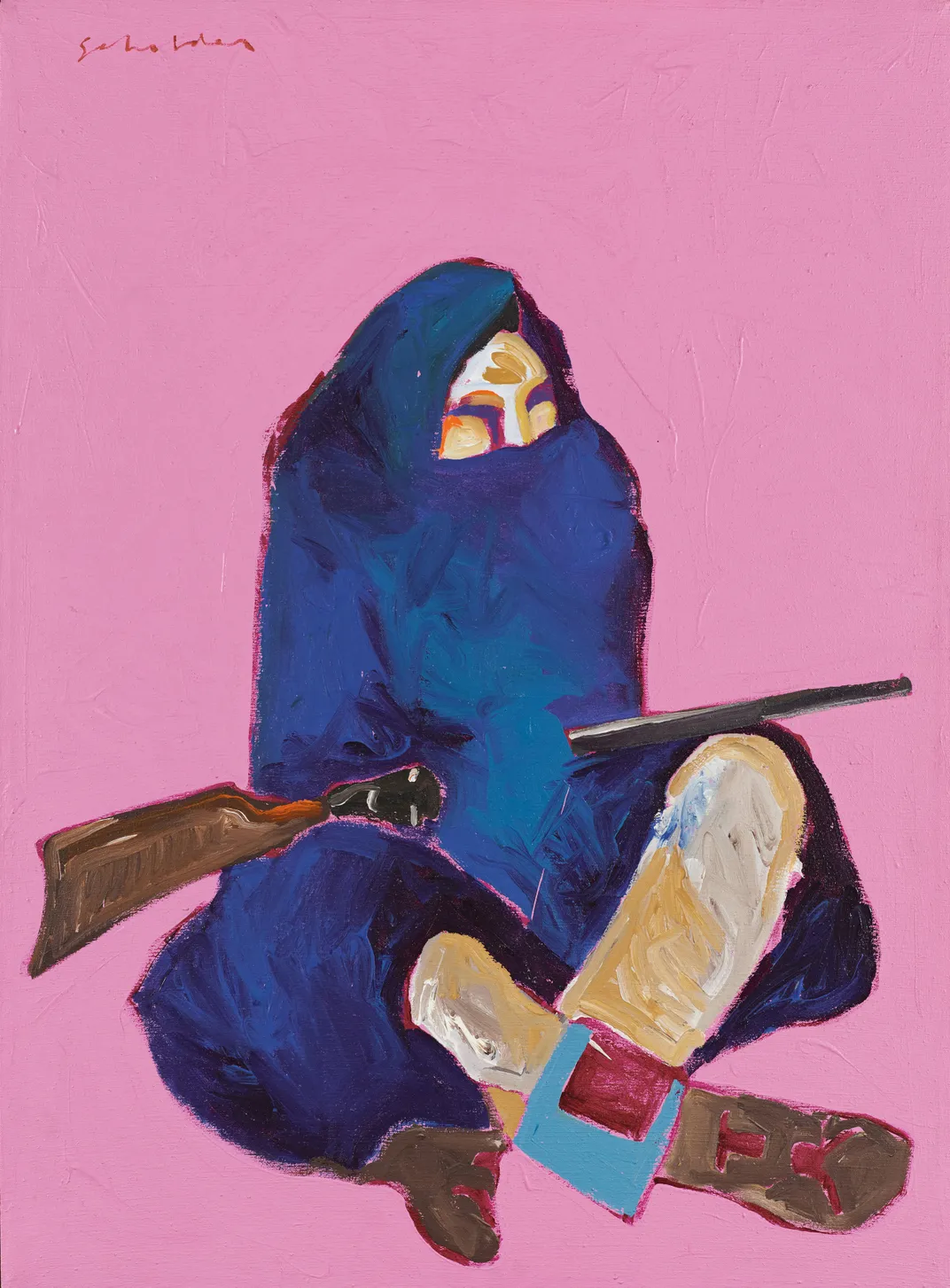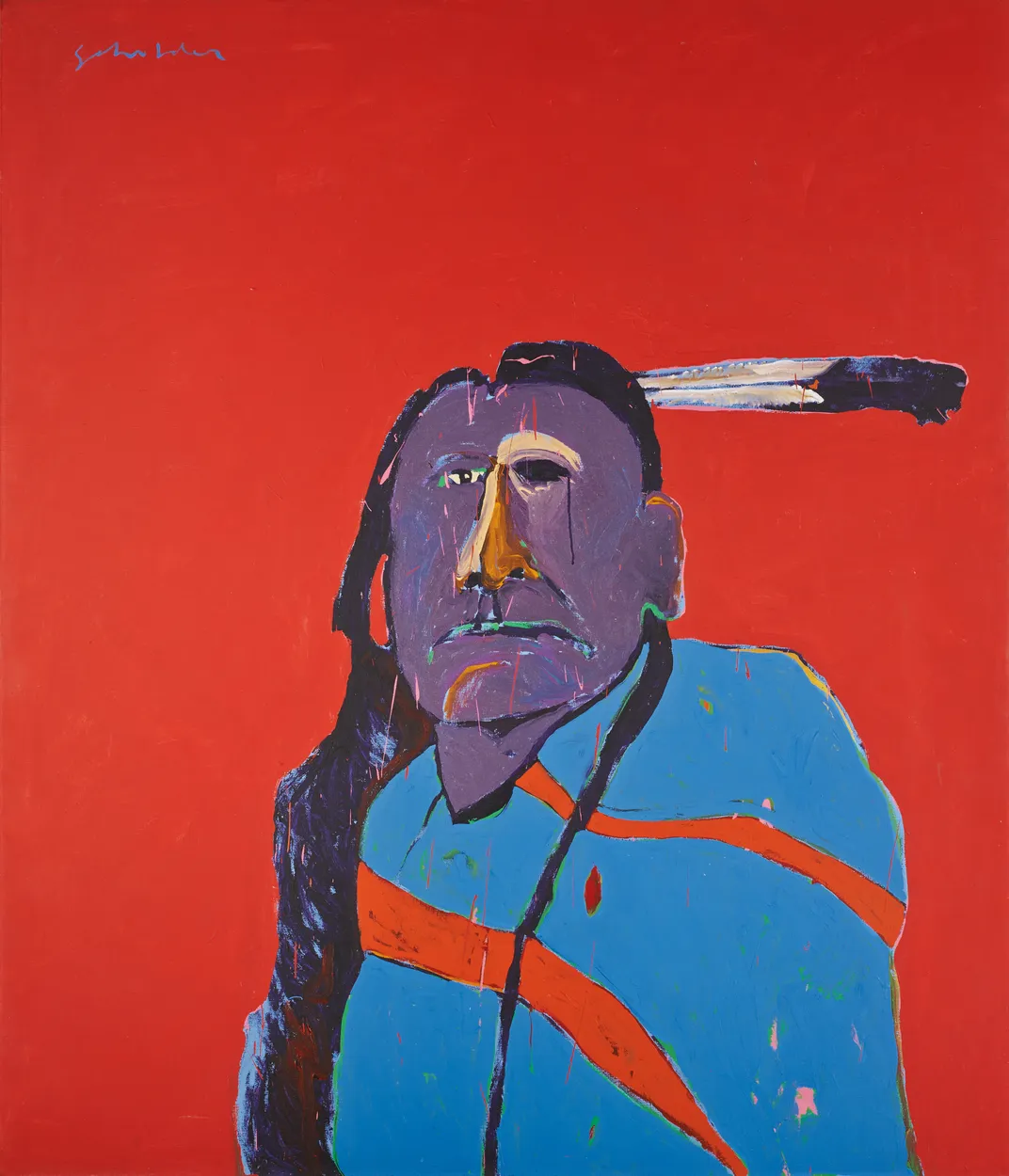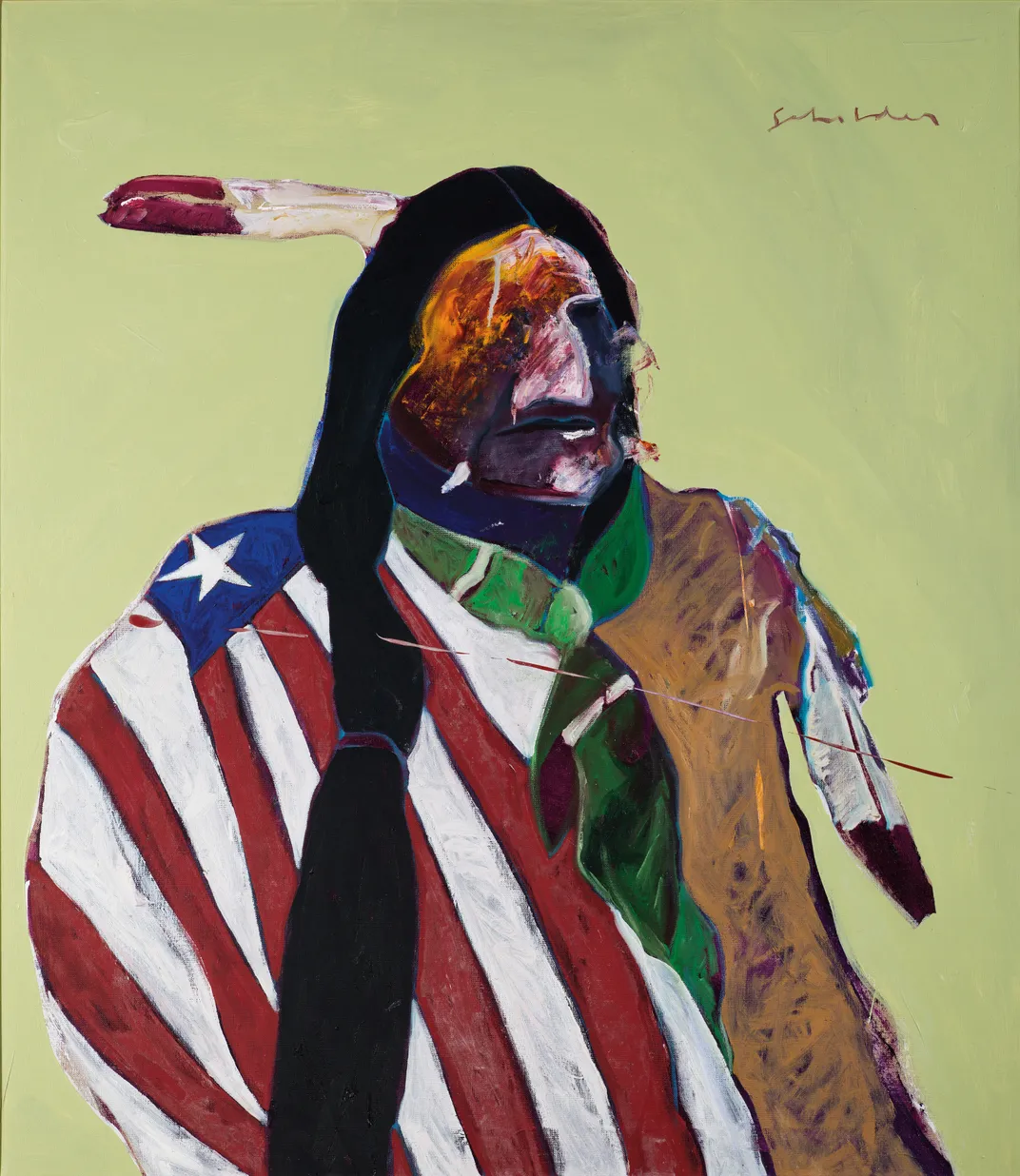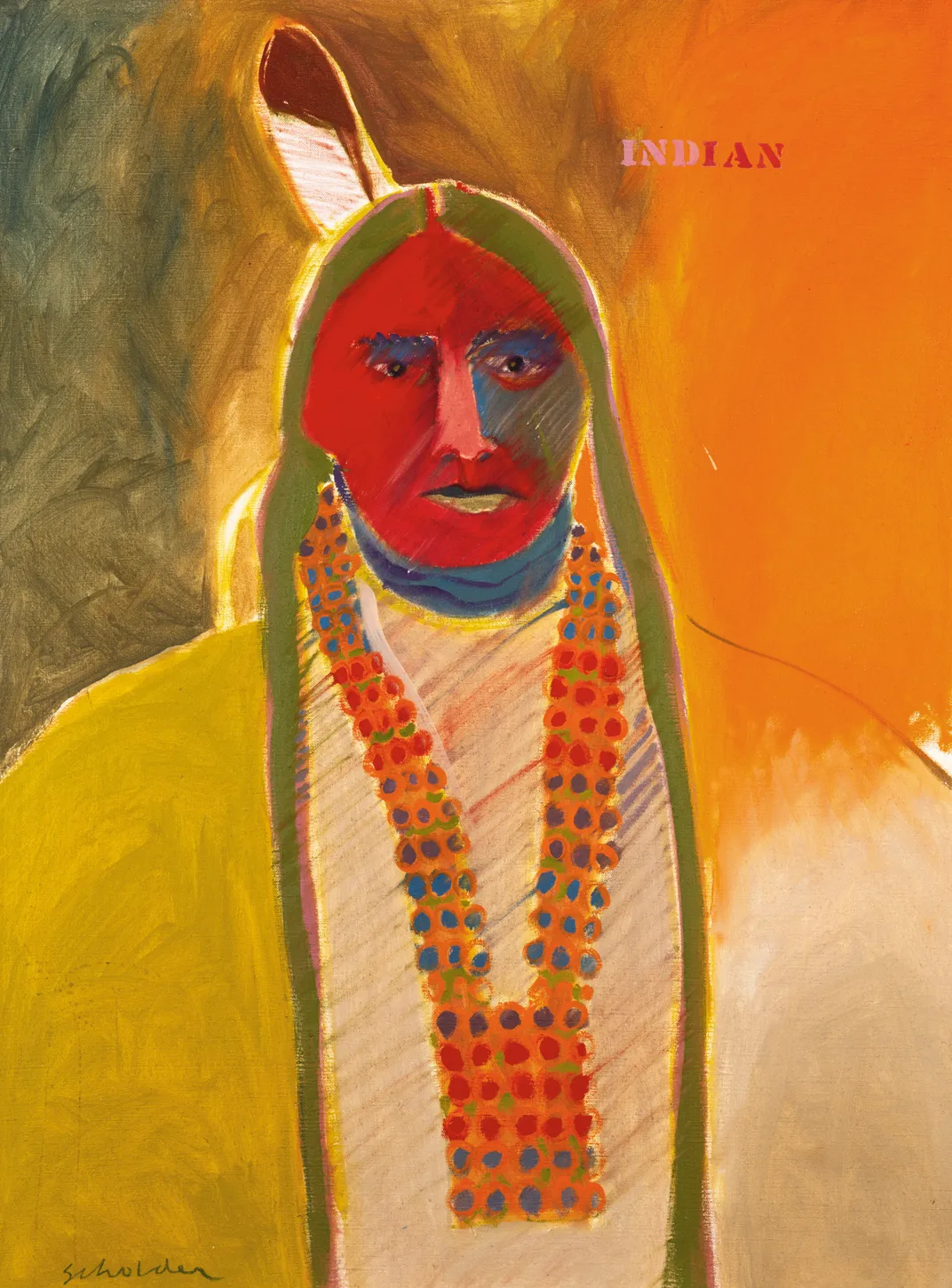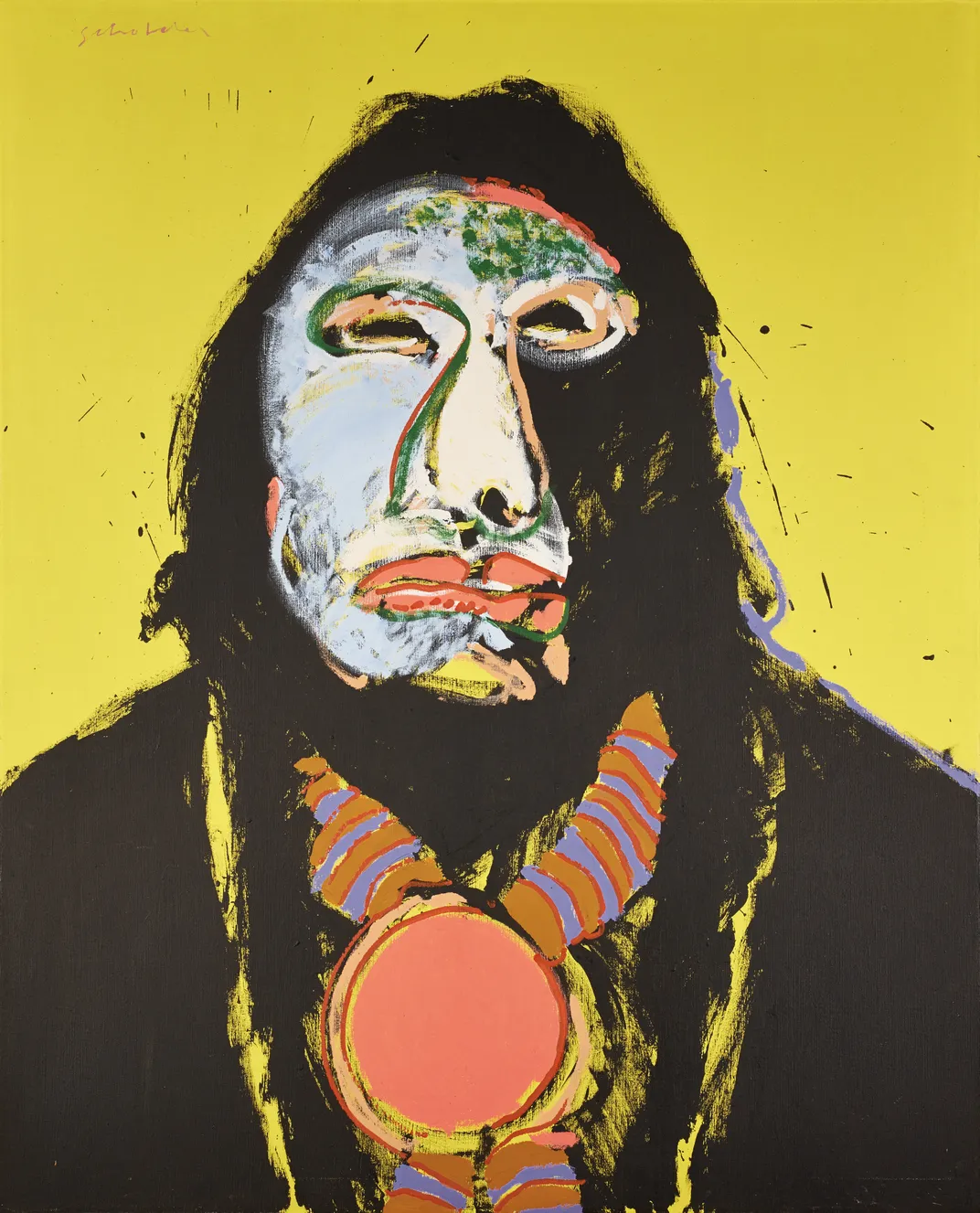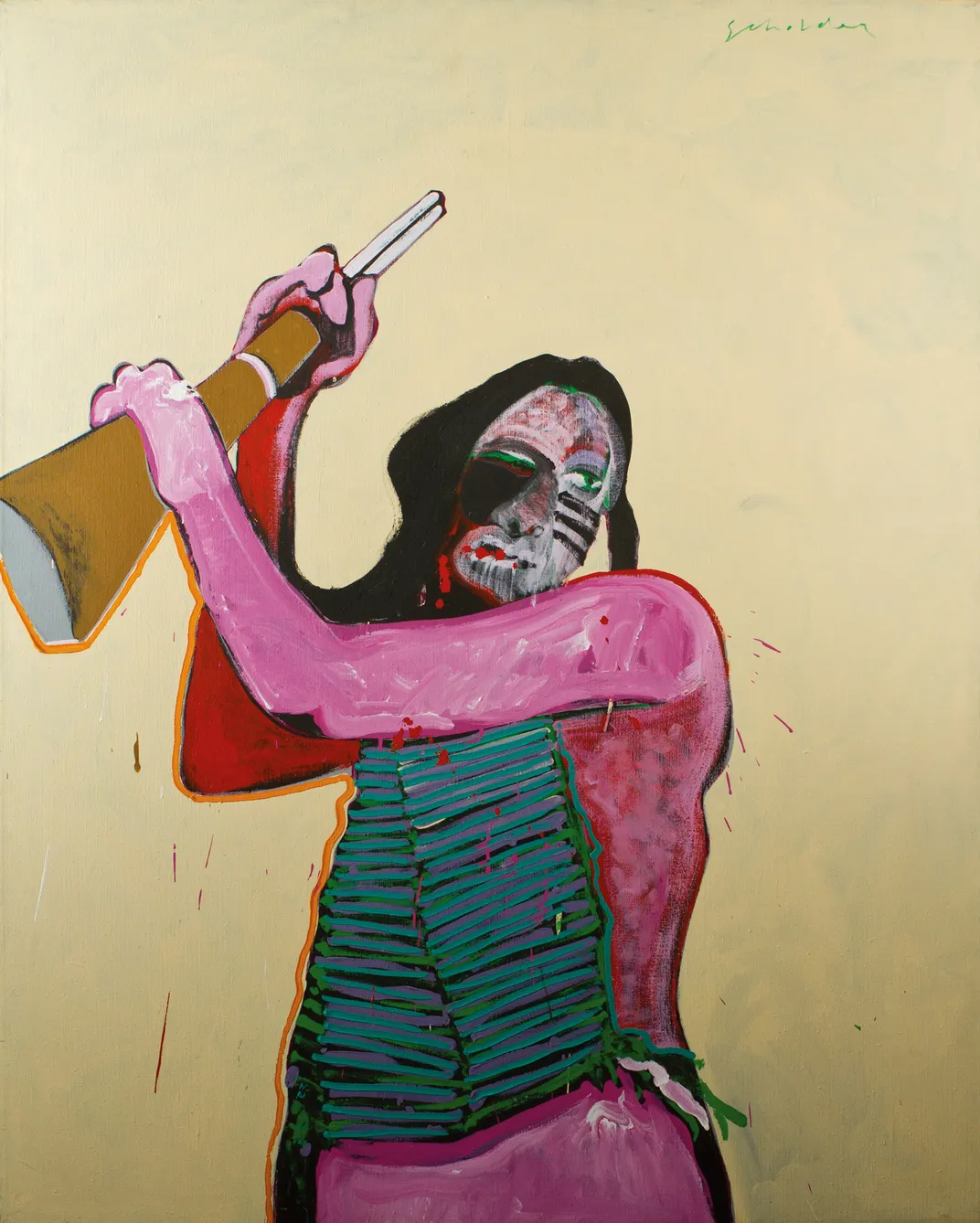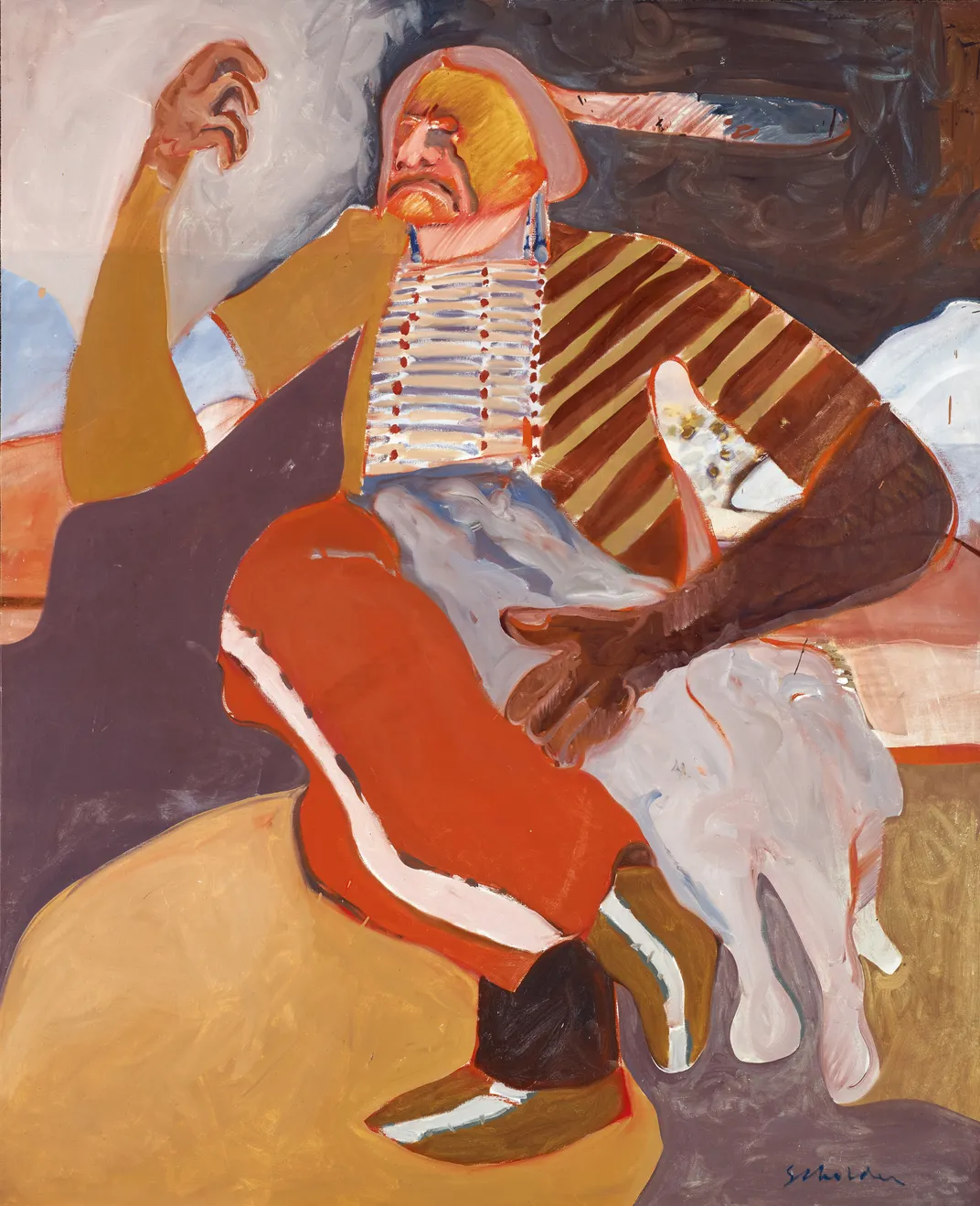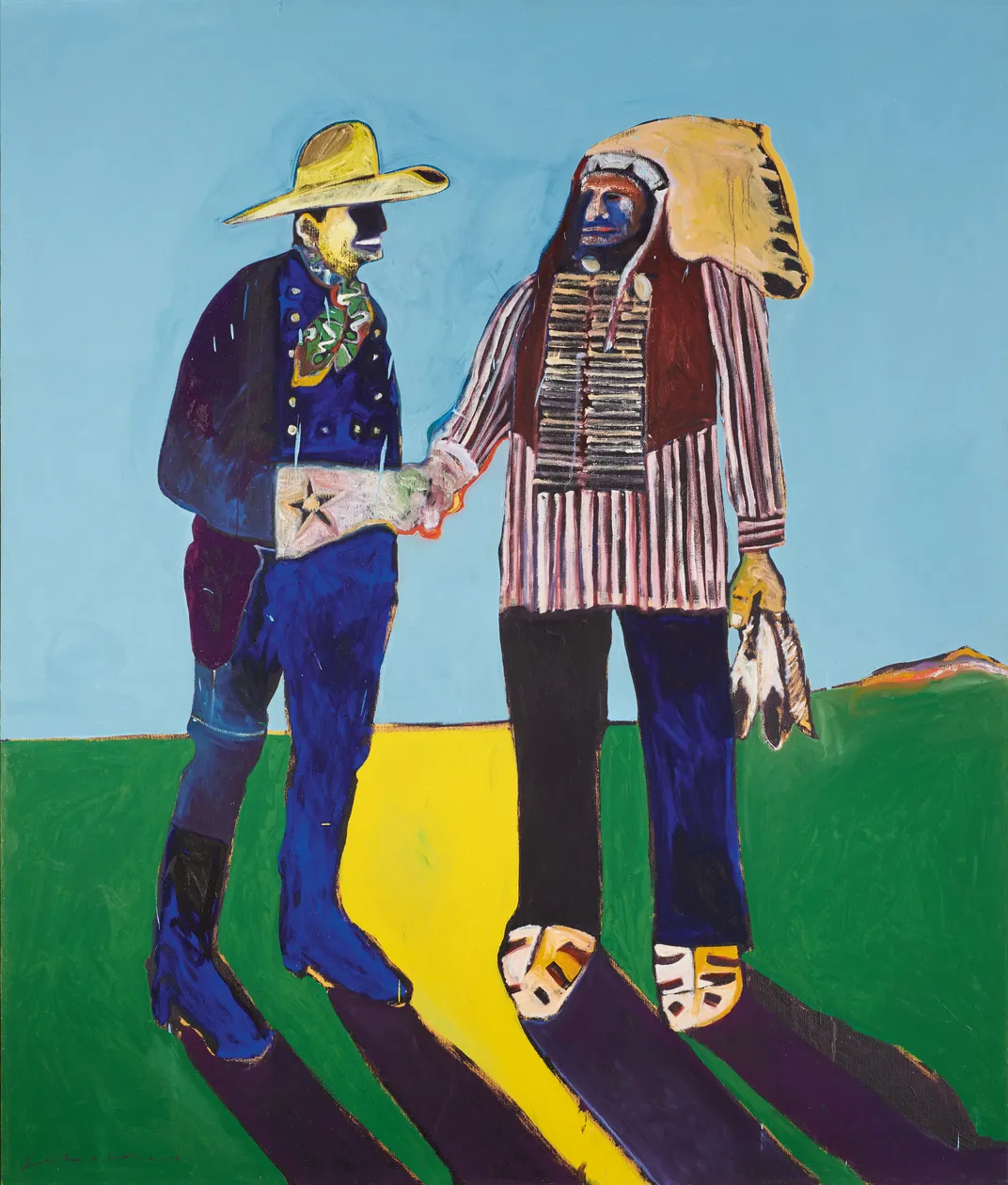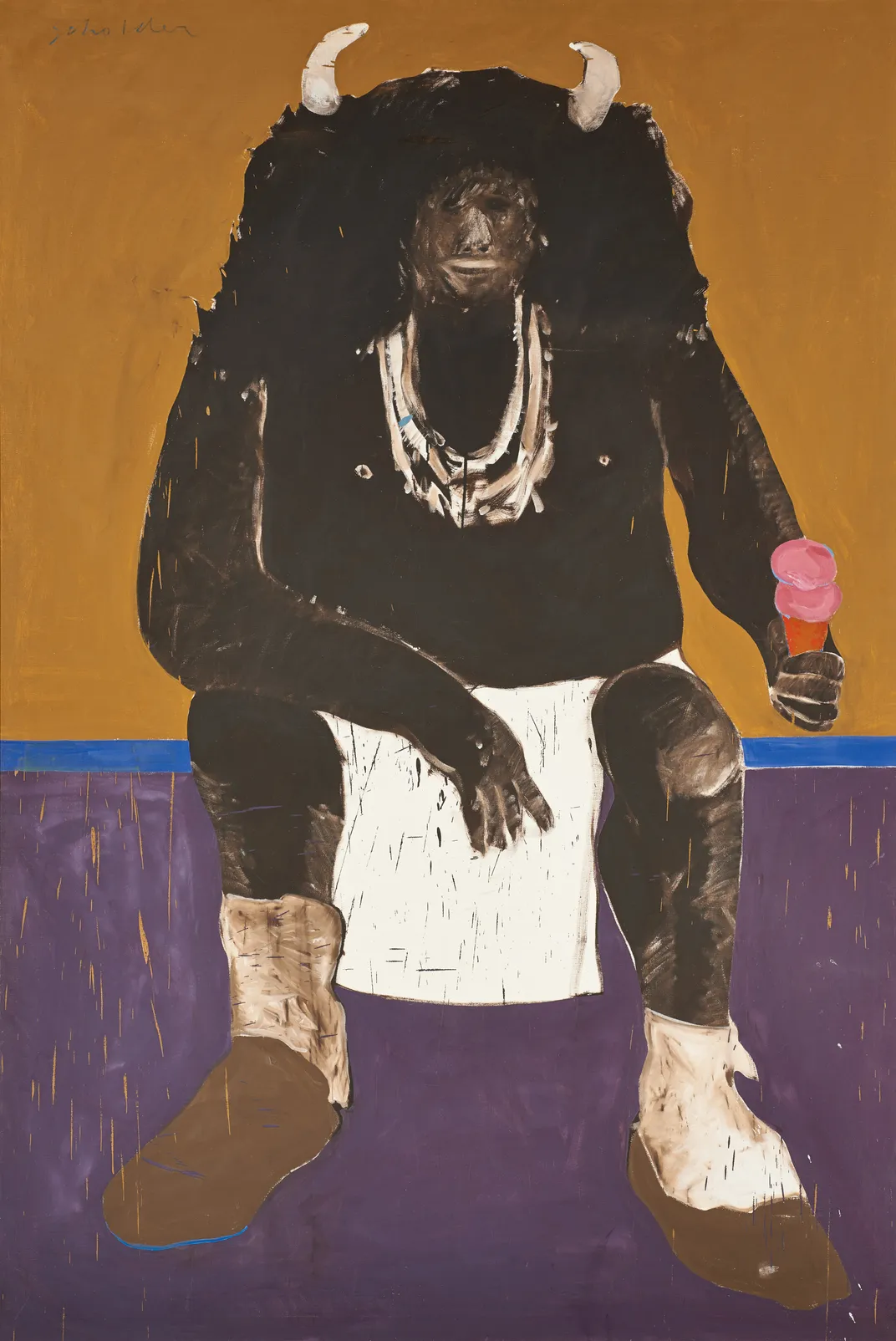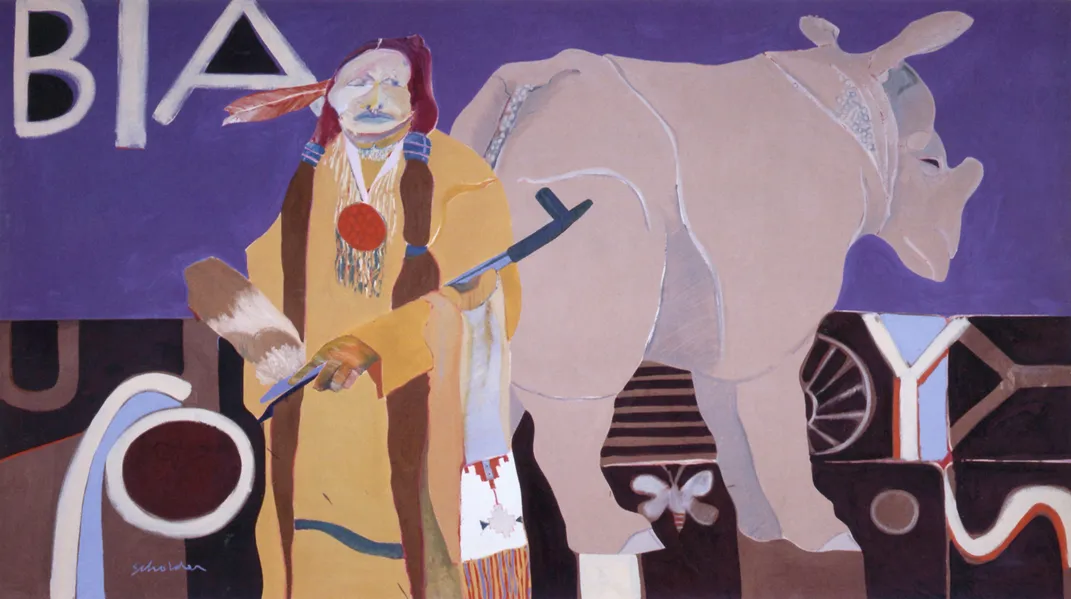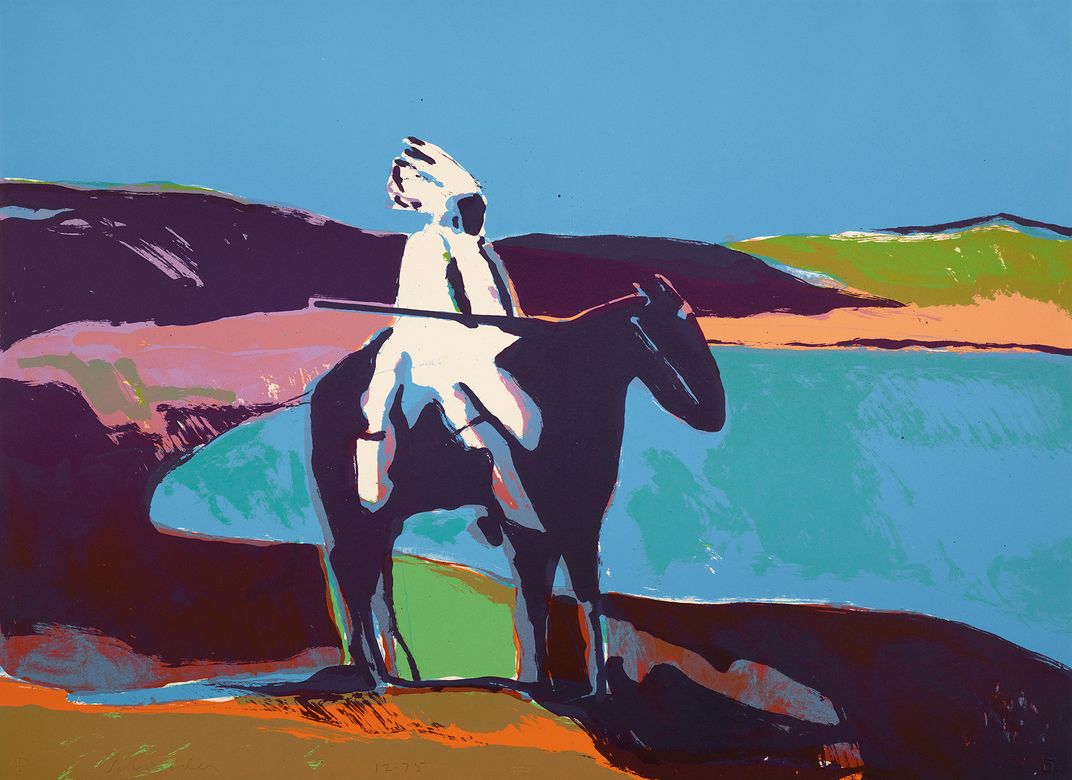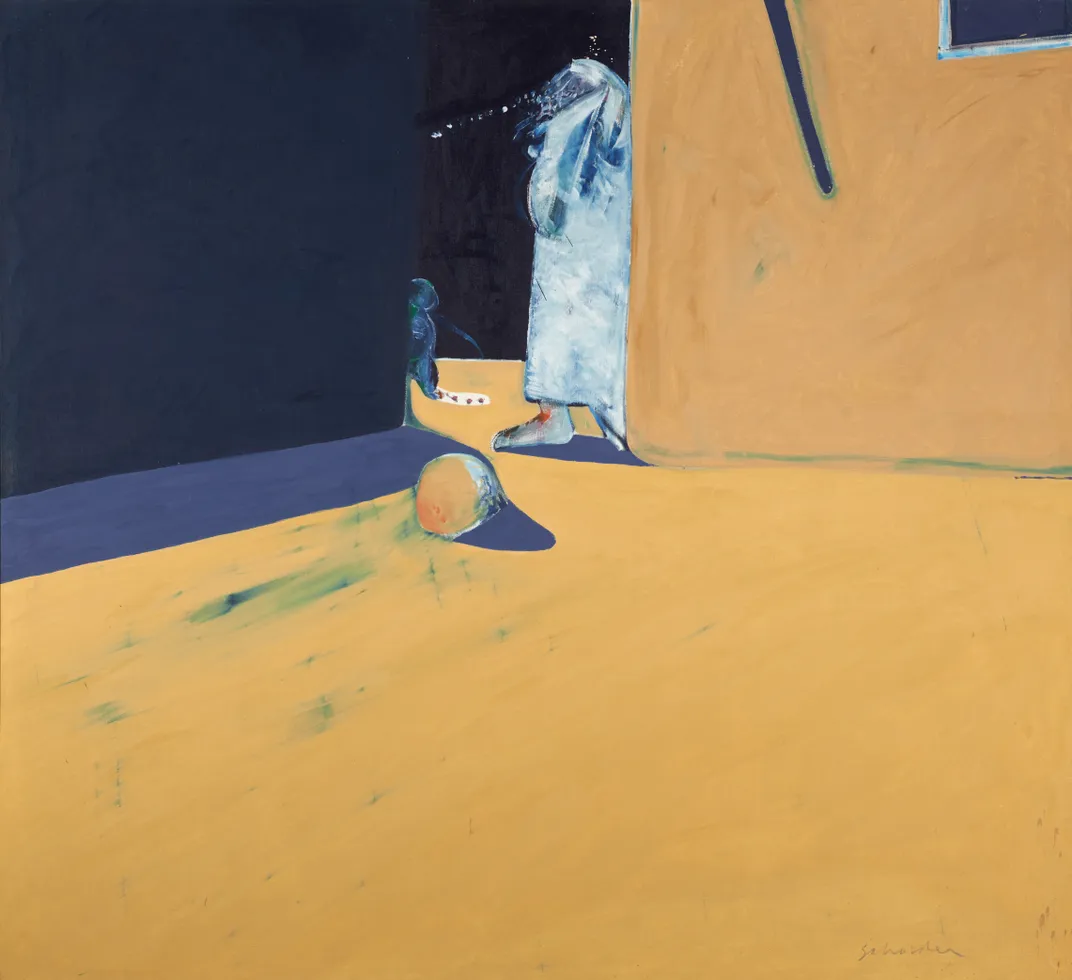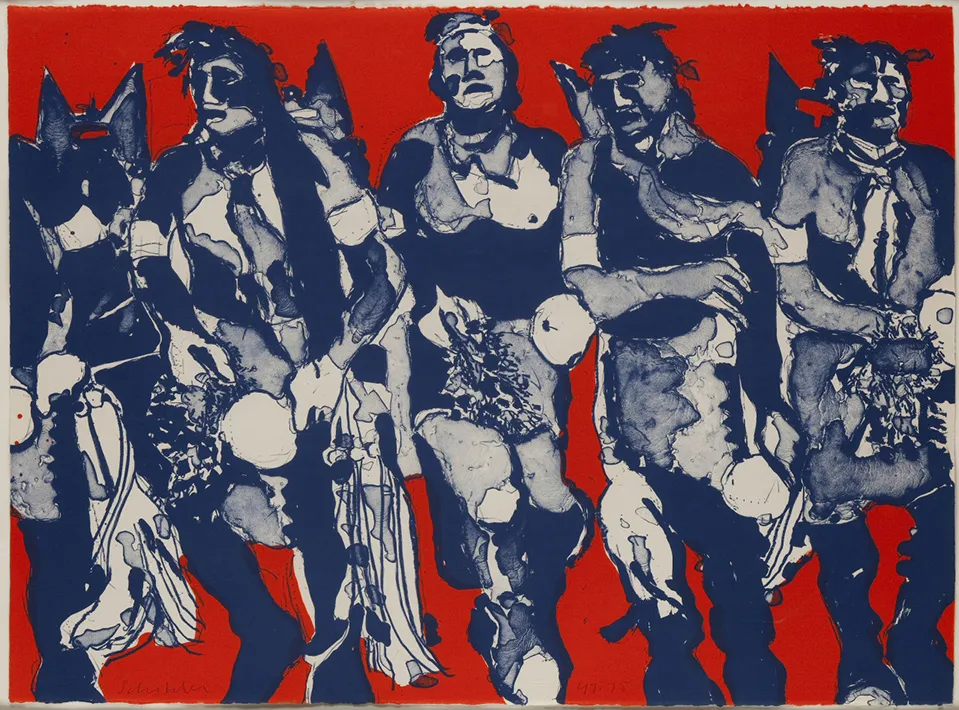How Native American Artist Fritz Scholder Forever Changed the Art World
An exhibit in Denver looks at why we should all be grateful that Scholder broke his word
/https://tf-cmsv2-smithsonianmag-media.s3.amazonaws.com/filer/7b/de/7bde2825-3855-46a5-8d12-86675fd01e4f/1973_53_7_indians-with-umbrellas-cap-no-caption.jpg)
In the winter of 1967, artist Fritz Scholder broke a promise.
Working as a teacher at the Institute of American Indian Arts, Scholder was already a Native American artist of some renown. His work up to that point had come along with a vow — he would never paint a Native American figure. He believed the subject had devolved into a romantic cliché.
But standing before his students one day, he grew frustrated with their inability to create an “honest” representation of current American Indians. So he carried his brushes and paints into the studio classroom and quickly filled the canvas with the figure he pledged to avoid. The same subject that would eventually define his works.
Scholder’s decision to break his promise marked a fierce turning point for campaign on behalf of Native American rights and for American Indian artists.
His painting, Indian No. 1, and the works that followed thrust contemporary styles into a genre dominated by what Scholder characterized as “flat” and, at times, disingenuous depictions of Native Americans. His paintings disrupted comfort zones — even for Native Americans — by rawly exposing issues including alcoholism, unemployment and cultural clashes.
But for Scholder, who was one-quarter Native American, the choice to paint the charged subject matter was — as in any of his paintings — second to his love of color and focus on composition. Scholder did not fully embrace his Native American heritage. He was, at his core, a painter.
Still, decades after he completed his Indian Series, people struggle to look beyond the subjects in Scholder’s paintings.
An exhibition of Scholder’s work at the Denver Art Museum is designed to help visitors see more.
“Super Indian,” an exhibition featuring 40 of Scholder’s rarely seen paintings and lithographs, is one of the first to explore how Scholder used a mix of figurative and pop influences to create challenging and colorful images. In short, the exhibition is designed to re-connect viewers with the artist, instead of the political or protest painter Scholder claimed he never was.
“Scholder came in with a technique and applied it to whatever subject matter he happened to be working on, whether that was abstract landscapes, whether that was butterflies, whether that was Indians or women or dogs,” said John Lukavic, associate curator of Native arts at the museum. “He wasn’t starting with the subject matter, he was finishing with the subject matter.”
Scholder’s grandmother was a member of the Luiseño tribe of Mission Indians. Born in 1937, Scholder spent his childhood traveling with his father, who was assigned different posts as a school administrator for the Bureau of Indian Affairs.
Still, Scholder did not consider himself an Indian. He was not drawn to the subject matter when he entered Sacramento State University to earn his art degree. By the time Scholder entered the world of Native American art in 1961, his style and love of color had been heavily influenced by abstract expressionists such as Willem de Kooning and other painters such as Francis Bacon.
When he accepted a teaching position at the Institute of American Indian Arts in Santa Fe in 1964, he vowed never to paint a Native American and to instill his love of color and composition in his students.
He only broke one of those promises.
Even after painting Indian No. 1 in 1967, Scholder continued to consider color first when painting an image. All of his paintings were first and foremost “an experiment in color,” Lukavic said.
Some of Scholder’s Indian paintings featured in the Denver exhibit capture how his love of color helped transform Native American art. Solitary figures, which before were painted in dramatic Plains scenes, were placed on bright, solid color fields — blue native figures appeared on bright pink backgrounds.
In an archival interview excerpted in the exhibition’s catalog, Scholder described his love of color:
“One color by itself is pretty blah. I don’t care what color you take. It’s when you put the second color next to the first color that, then things start to happen, and you get vibrations, you get, when you get purple next to an orange, things are going to happen.”
One of Lukavic’s goals in designing the exhibition was to give the large paintings room to breathe, to give viewers an opportunity to experience the sensations Scholder described by seeing the colors side-by-side, and to experience the hues up close. Purples, reds, yellows and blacks all appear in a closer examination of just one of the artist’s brush strokes.
But no matter the colors Scholder selected, the majority of his figures in the Indian Series were politically charged. The American Indian Movement of the 1970s mirrored the growing tensions in the Civil Rights Movement. Activists pushed for Indian sovereignty and addressed issues of racism and federal policies that discriminated against Native populations. Scholder never publicly aligned himself with the Movement, but a number of his paintings dripped with politics and activism.
One of the most iconic paintings in the Denver exhibition — Super Indian No. 2 -- is one of Scholder’s more controversial works. The image shows a Native American dancer wearing a ceremonial buffalo headdress. But the dancer is slumped over his knees, appearing exhausted, holding a strawberry ice cream cone.
The image of a man exhausted after performing a ceremonial dance for tourists was a clear challenge to the well-known romantic images of Native Americans. Super Indian No. 2, painted in 1971, and paintings that followed were an effort by Scholder to show Native Americans not only in a contemporary style, but in a way that captured their lives in modern society.
In 1973, Scholder told the Chicago Tribune: “People don’t really like Indians. Oh, they like their own conceptions of the Indian — usually the Plains Indian, romantic and noble and handsome and somehow the embodiment of wisdom and patience. But Indians in America are usually poor, sometimes derelicts outside the value system, living in uncomfortable surroundings. We have really been viewed as something other than human beings by the larger society.”
The image of the dancer, painted after Scholder watched a similar scene unfold at a Pueblo ceremony near Santa Fe, drew ire from Native and non-Native peoples, Lukavic said. Scholder’s abstract figures of Native Americans in modern settings, such as at a bar or drunk on the street, repeatedly drew the question: “Why do you paint Indians so ugly?”
Scholder, however, seldom carried those criticisms with him. Whether people loved or hated his paintings he didn’t care, so long as they experienced some kind of reaction, Lukavic said.
Some of Scholder’s most challenging and provoking paintings came from his darker palettes and are featured in the exhibition.
Subjects in the paintings were inspired by events such as the American Indian Movement’s 1972 occupation of Bureau of Indian Affairs headquarters in Washington, D.C. and the deadly standoff at Wounded Knee, South Dakota, the next year. The Still, the subjects remained an accessory to the colors and composition Scholder used in the paintings.
But even Scholder’s most morbid paintings carried something many other painters of his era and style did not: Hope.
“Native people persevere,” Lukavic said. “Even though native people were subjected to this kind of treatment in the past, they’re still here, they still have strong communities. This is saying this is what native people went through -- which influenced how people live their lives today — but they are living their lives today.”
In 1980, Scholder painted the last painting in his Indian Series. He would later explain that he “had finished what I had to say about Indians.”
Before his death in 2005, Scholder brought his love of color and figurative style to other subjects — none were considered as successful as his Indian paintings. Whether it was the use of color or the charged subject matter that drew so many to his work, almost anyone who views them was grateful he broke his promise.
“Super Indian: Fritz Scholder” is on view through January 17, 2016 at the Denver Art Museum, a Smithsonian Affiliate museum, in Denver, Colorado.
